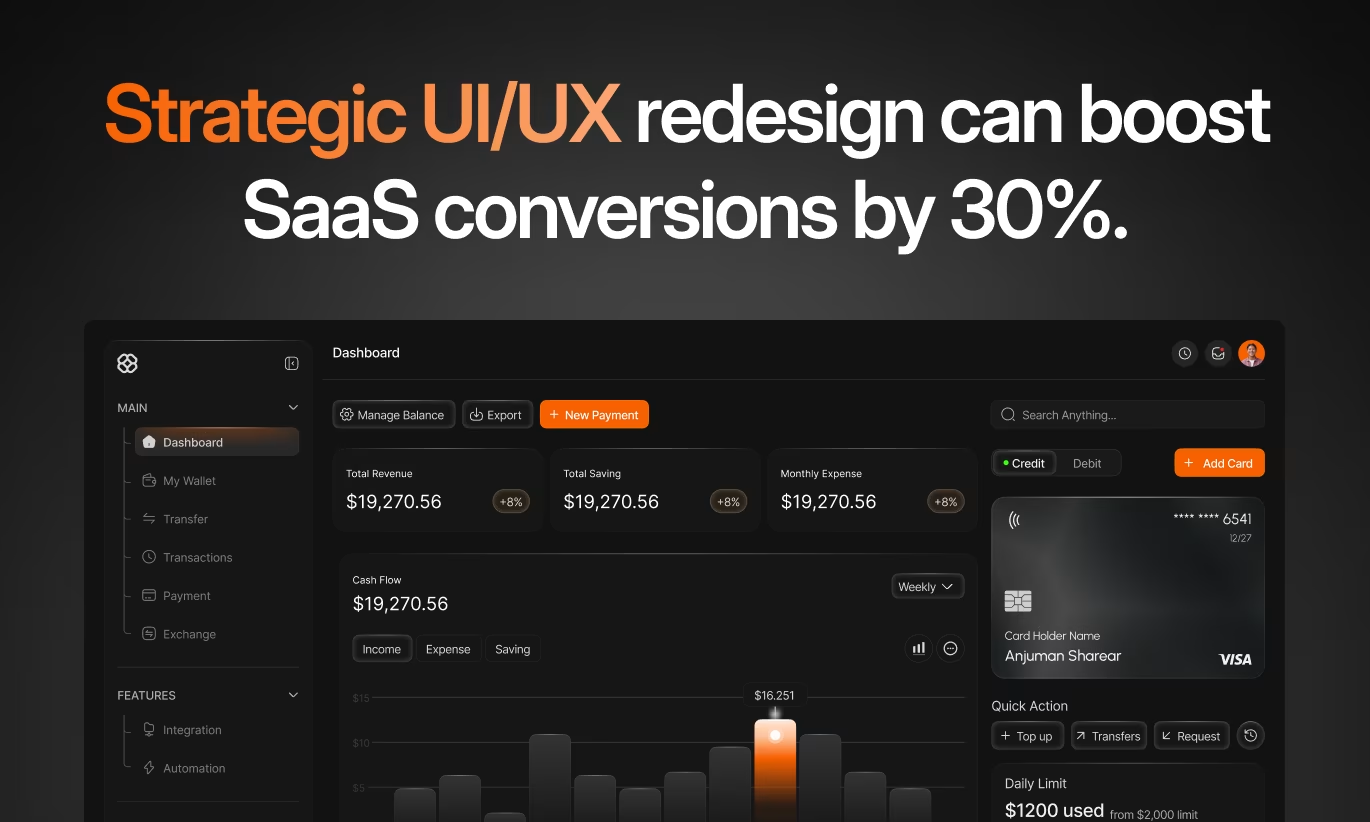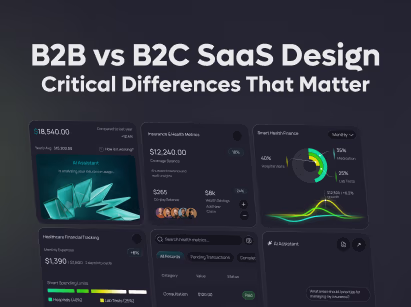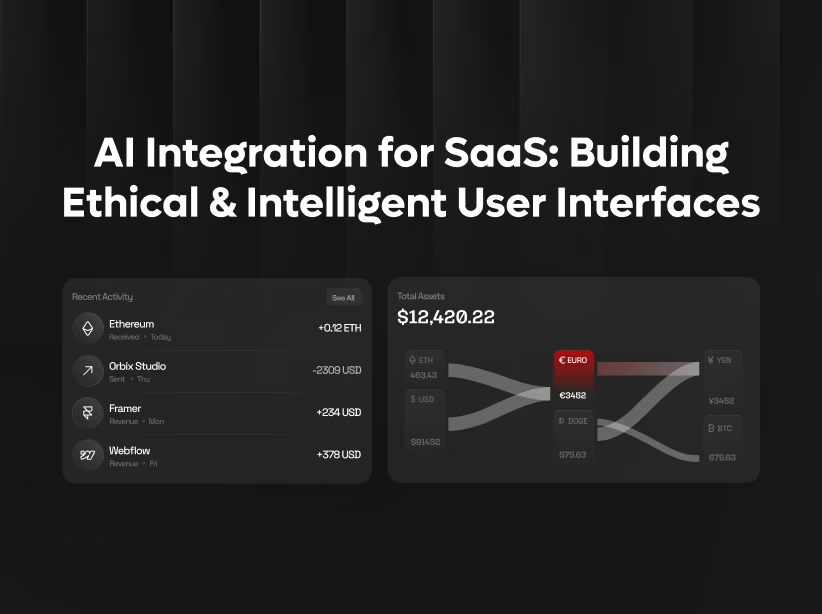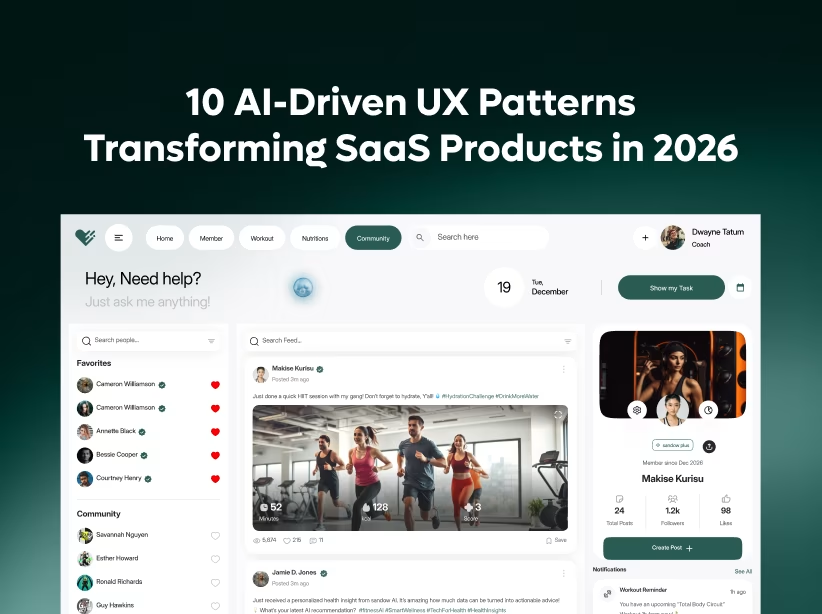
Your SaaS product has paying customers, but conversion rates remain stubbornly low. Users sign up but never activate. Trial users explore features but don't convert to paid plans. Customers churn within months despite your product solving real problems. The culprit? Often, it's not your product—it's your user experience.
Strategic SaaS UI/UX redesign is the most underutilized growth lever for established SaaS companies. While most founders focus on adding features or increasing marketing spend, companies that invest in conversion rate optimization through thoughtful redesign consistently see 25–40% improvements in key metrics. The data is compelling: every dollar invested in UX redesign returns $100 on average, making it one of the highest-ROI investments available to SaaS companies.
This guide reveals how strategic user experience optimization transforms struggling products into high-converting, retention-focused platforms that users love and investors notice.
Why SaaS Conversion Rates Suffer: The Hidden UX Problems
Before diving into redesign strategies, understanding why conversions suffer helps target improvements effectively.
Common UX Issues Killing SaaS Conversions
Confusing onboarding flows cause 40–60% of new users to abandon before experiencing core value. If users can't figure out how to achieve their first win within minutes, they'll never become paying customers.
Poor information architecture buries valuable features where users never discover them. You've built powerful capabilities, but if users can't find them, they might as well not exist.
Friction-filled signup processes with excessive form fields, unclear value propositions, or technical barriers convert only 2–3% of visitors compared to 8–12% for optimized experiences.
Overwhelming interfaces present too many options simultaneously, causing decision paralysis. Users freeze rather than engage when confronted with complexity.
Unclear value communication fails to articulate benefits quickly. If users don't understand why your product matters within seconds, they bounce.
Mobile experience neglect frustrates the 40–60% of B2B SaaS traffic now coming from mobile devices. Unresponsive or poorly adapted mobile experiences hemorrhage potential customers.
Trust and credibility gaps manifest through inconsistent branding, outdated visual design, or absent social proof, making users question product quality.
The Strategic Approach to SaaS UI/UX Redesign
Effective conversion rate optimization through redesign requires strategy, not just aesthetic updates. Random design changes rarely move metrics meaningfully.
1. Data-Driven Diagnosis: Identify Conversion Bottlenecks
Strategic user experience optimization begins with understanding where and why users struggle.
Essential analytics to review:
- Funnel analysis identifying where users drop off (signup, onboarding, feature adoption, upgrade)
- Heatmaps and session recordings revealing actual user behavior versus intended paths
- Support ticket analysis uncovering recurring confusion and frustration points
- User surveys and feedback highlighting perceived problems and unmet needs
- A/B testing results from previous experiments showing what resonates
Key metrics to baseline:
- Visitor-to-signup conversion rate
- Signup-to-activation rate
- Trial-to-paid conversion rate
- Feature adoption rates
- Time-to-value for new users
- Churn rate by cohort
- Net Promoter Score
Without data establishing current performance and problem areas, redesign becomes guesswork unlikely to impact conversions meaningfully.
2. User Research: Understand Your Customers Deeply
Numbers reveal what's happening; research reveals why. Combining quantitative data with qualitative insights creates complete understanding.
Research methods for SaaS conversion optimization:
User interviews with churned customers, active power users, and stalled trial users uncover motivations, frustrations, and decision-making processes. Ask why they chose your product, what alternatives they considered, what almost made them leave, and what keeps them engaged.
Usability testing watching real users attempt key tasks reveals friction points invisible to internal teams. Observe signup flows, first-time experiences, feature discovery, and upgrade processes.
Jobs-to-be-Done Research identifies the outcomes users hire your product to achieve, informing design priorities around actual user goals rather than assumed needs.
Competitive analysis examining how successful competitors handle similar UX challenges provides inspiration and identifies industry expectations users now consider standard.
3. Prioritize High-Impact Redesign Areas
Not all redesign efforts yield equal conversion improvements. Focus on areas with maximum impact potential.
Highest-impact redesign priorities for conversion rate optimization:
Onboarding experience offers the biggest conversion leverage. Improving activation rates from 30% to 50% fundamentally transforms business economics. Optimize for clarity, quick wins, progressive disclosure, and emotional positive reinforcement.
Signup flows represent your first impression and gatekeeper to all downstream conversions. Reduce fields, clarify value, remove friction, add trust signals, and test social signup options.
Core feature workflows where users accomplish primary jobs determine whether they perceive value sufficient for payment. Streamline steps, reduce clicks, provide clear feedback, and celebrate successes.
Pricing and upgrade experiences directly impact revenue. Clearly communicate plan differences, use visual comparison tables, reduce decision complexity, and remove upgrade friction.
Mobile responsiveness cannot be ignored given mobile traffic volumes. Ensure thumb-friendly controls, readable typography, simplified navigation, and feature parity where appropriate.
4. Apply Proven Conversion Optimization Principles
Strategic SaaS UI/UX redesign incorporates established UX principles proven to increase conversions.
Reduce cognitive load: Simplify interfaces by removing unnecessary elements, using progressive disclosure for advanced features, maintaining visual hierarchy, and providing clear next actions.
Optimize for scanning: Users scan rather than read. Use descriptive headers, bullet points over paragraphs, visual elements reinforcing key messages, and whitespace for breathing room.
Build trust immediately: Display customer logos and testimonials, show security badges and certifications, provide transparent pricing, offer guarantees and clear refund policies, and maintain professional consistent branding.
Minimize form friction: Request only essential information initially, use smart defaults and auto-fill, provide inline validation and clear error messages, break long forms into steps, and explain why you're asking for data.
Create urgency without manipulation: Show limited-time offers authentically, display social proof like signup numbers, indicate scarcity when genuine, but avoid dark patterns destroying trust.
Leverage psychology: Apply reciprocity by giving value before asking, use social proof showing others' success, create commitment through small initial steps, and maintain consistency across all touchpoints.
5. Implement Iterative Testing and Refinement
The most effective user experience optimization happens through continuous iteration, not one-time redesigns.
Testing methodology:
A/B testing compares redesigned elements against current versions, isolating impact on conversion metrics. Test headlines, button copy and colors, form lengths, pricing presentations, and onboarding flows individually.
Multivariate testing examines combinations when multiple elements interact, though requires significant traffic for statistical significance.
Prototype testing validates concepts before full implementation using clickable prototypes tested with target users, gathering feedback before development investment.
Gradual rollout implements changes incrementally to monitor impact without risking entire user base, allowing quick rollback if problems emerge.
Continuous monitoring tracks conversion metrics, user behavior, support tickets, and user feedback post-launch, identifying new optimization opportunities.
Specific Redesign Tactics That Boost Conversions
Optimize Your Signup Flow for Maximum Conversion
Reduce fields to absolute minimum – each additional field decreases conversions 5–10%. Request only email and password initially, gathering additional information progressively after users experience value.
Social signup options (Google, Microsoft, LinkedIn) reduce friction significantly, converting 20–40% better than traditional email signup.
Clear value proposition above the fold explains what users get and why it matters within seconds. Use benefit-focused copy, not feature lists.
Remove distractions by hiding navigation, removing external links, and focusing attention exclusively on signup completion.
Trust signals like customer counts, company logos, security badges, and testimonials positioned near signup forms increase trust and conversions.
Smart error handling with inline validation, specific helpful messages, and prevented errors beats post-submission error pages showing after users already invested effort.
Transform Onboarding Into Activation Engine
Empty state design when users first log in determines whether they activate or abandon. Instead of blank screens, show clear next steps, templates or examples to get started, video walkthroughs, and sample data illustrating functionality.
Progressive onboarding reveals features gradually rather than overwhelming with information dumps. Focus first session on one clear win, introduce advanced features after basic competence, and use contextual tooltips during actual usage.
Quick wins prioritized let users achieve something meaningful within 5 minutes. Identify your “aha moment” and design onboarding guiding users there fastest.
Personalization questions during onboarding enable tailored experiences showing relevant features and content for user's specific use case.
Progress indicators show onboarding completion percentage, motivating users through gamification psychology and providing clear path to full activation.
Redesign Navigation for Feature Discovery
Information architecture audit ensures logical feature grouping, intuitive labeling, and shallow navigation hierarchies allowing access within 2–3 clicks.
Search functionality with autocomplete, typo tolerance, and result previews helps users find features faster than browsing menus.
Command palettes (keyboard shortcuts) enable power users to access features instantly, dramatically improving efficiency for frequent users.
Contextual feature suggestions surface relevant tools based on current activity, increasing discovery without cluttering interfaces.
Persistent key actions through floating action buttons or sticky toolbars keep critical functions accessible regardless of scroll position.
Optimize Pricing and Upgrade Experiences
Visual comparison tables clearly differentiate plans using checkmarks, highlighting recommended options, and emphasizing value differences not just feature lists.
Transparent pricing eliminating surprises increases trust. Show total costs including taxes and fees upfront, explain billing clearly, and provide easy plan switching.
Trial optimization balances giving enough time to experience value (14–30 days typically) with urgency preventing indefinite delay. Send strategic emails during trials highlighting unused features and approaching deadlines.
Seamless upgrade flows remove friction with saved payment information, one-click upgrades, immediate feature access, and celebratory confirmation experiences.
Annual billing incentives offering 15–25% discounts improves cash flow and reduces churn while appealing to cost-conscious buyers.
Mobile-First Responsive Redesign
Touch-friendly interfaces require minimum 44×44 pixel touch targets, generous spacing between interactive elements, and thumb-zone optimization placing frequent actions within comfortable reach.
Simplified mobile navigation using bottom tabs for primary sections, hamburger menus only for secondary options, and persistent access to key actions.
Performance optimization for mobile networks through aggressive image compression, lazy loading, minimal JavaScript, and progressive web app features enabling offline functionality.
Mobile-appropriate features may differ from desktop. Consider what users need on mobile versus desktop, potentially hiding complex features while highlighting mobile-relevant capabilities.
Measuring Redesign Success and ROI
Track these metrics validating conversion improvements from user experience optimization:
Conversion funnel metrics:
- Visitor-to-signup conversion (target: 8–12%)
- Signup-to-activation rate (target: 40–60%)
- Trial-to-paid conversion (target: 20–40%)
- Free-to-paid conversion (target: 2–5%)
Engagement metrics:
- Time to first value
- Feature adoption rates
- Daily/weekly active users
- Session frequency and duration
Revenue metrics:
- Customer lifetime value increase
- Average revenue per user growth
- Churn rate reduction
- Expansion revenue growth
User satisfaction:
- Net Promoter Score improvement
- Customer satisfaction ratings
- Support ticket volume decrease
- Positive review increase
Successful SaaS conversion optimization through redesign typically shows measurable improvements within 30–90 days, with compounding benefits as more users experience the enhanced experience.
Common Redesign Mistakes to Avoid
Changing everything simultaneously makes identifying what actually improved conversions impossible. Iterative focused changes enable learning.
Ignoring existing users while optimizing for acquisition alienates your base. Balance acquisition and retention priorities.
Prioritizing aesthetics over usability creates pretty designs that don't convert. Focus on removing friction before polishing visuals.
Skipping user research leads to solutions addressing assumed rather than actual problems.
Insufficient testing before full launch risks damaging conversions. Test with real users before committing.
Neglecting mobile experience despite mobile traffic majority guarantees leaving conversions on the table.
Timeline and Investment for Strategic Redesign
Typical timeline:
- Research and audit: 2–4 weeks
- Strategy and design: 4–8 weeks
- Development and implementation: 6–12 weeks
- Testing and refinement: Ongoing
Investment range:
- Small focused improvements: $\$10,000–\$30,000$
- Comprehensive redesign: $\$50,000–\$150,000+$
- Enterprise-scale optimization: $\$200,000+$
ROI typically justifies investment within 6–12 months through improved conversion rates and reduced churn.
Conclusion: Redesign as Growth Strategy
Strategic SaaS UI/UX redesign represents one of the highest-leverage growth investments available. While feature development and marketing spend compete for budget, conversion rate optimization through thoughtful redesign multiplies effectiveness of all other growth efforts.
A 30% conversion improvement doesn't just increase revenue 30%—it transforms unit economics, enables more aggressive customer acquisition, improves investor appeal, and creates competitive moats through superior user experience.
The question isn't whether to invest in user experience optimization but whether you can afford not to. Every day your conversions underperform costs customers, revenue, and competitive position.
At Orbix Studio, we specialize in conversion-focused SaaS UI/UX redesign that delivers measurable business results. Our data-driven approach combines deep user research, proven optimization principles, and rigorous testing to transform struggling products into high-converting growth engines. We don't just make things pretty—we architect experiences that convert visitors into customers and customers into advocates.
Fresh UI/UX Ideas, Straight to Your Inbox





